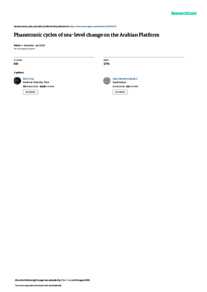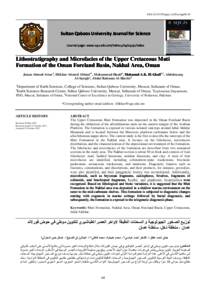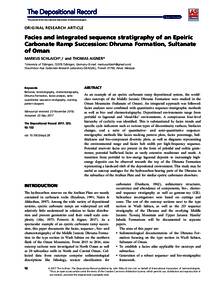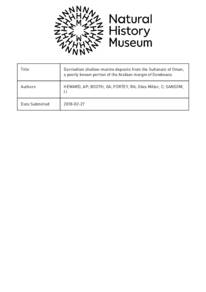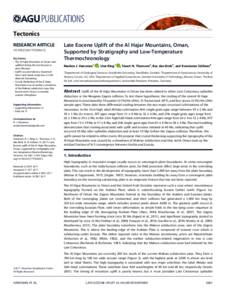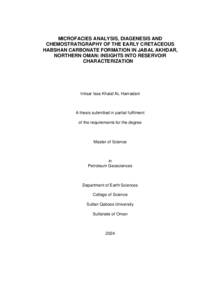Document
Phanerozoic cycles of sea-level change on the Arabian platform.
Identifier
DOI: 10.2113/geoarabia1002127
Source
GeoArabia. v. 10, 2, p. 127-160
Contributors
Al-Qahtani, Abdul Motaleb., Author
Country
Bahrain.
City
Manama
Publisher
Gulf PetroLink.
Gregorian
2005-04-01
Language
English
Subject
English abstract
The Arabian Plate has experienced a complex tectonic history while also being widely influenced by eustatic sea-level changes. These diastrophic events either affected changes in the rate and/or location of subsidence that in turn led to the creation of significant new sedimentary accommodation, or caused major erosional hiatuses. As a result, both eustasy and tectonics have played important roles in the development of sedimentary sequences and in determining the locus and characteristics of reservoir, source and seal facies on the Arabian Platform. Here, we present a synthesis (Cycle Chart) of the regional sea-level fluctuations affecting the Platform that is based on Phanerozoic epi- and peri-Platform sequence-stratigraphic data. Information used for the synthesis includes sections from Saudi Arabia, Kuwait, the Greater Gulf area, Oman and Yemen. The regional Cycle Chart incorporates interpreted sedimentary onlap patterns on the margins of the Arabian Platform, as well as models of regional sea-level fluctuations that controlled these patterns. These are compared to eustatic data that represents the 'global-mean' models of sea-level changes, largely at second-order cycle level for the Paleozoic and third-order cycle level for the Mesozoic and Cenozoic eras. The comparisons reveal that Phanerozoic sediment accumulation patterns on the Platform were broadly controlled by eustasy, with a strong overprint of tectonics for several long intervals. During periods of tectonic quiescence, however, correlations with the eustatic events improve significantly. Thus, for example, during the Cambrian through early Silurian and mid Jurassic through early Paleogene intervals eustasy may have been the significant controlling factor for sedimentary patterns when long-term trends in both regional and global sea-level curves show similarities. The use of the Cycle Chart could facilitate exploration efforts on the Arabian Platform, provide better chronostratigraphic estimates and global correlations, and prove a useful accompaniment for sequence-stratigraphic studies. This integrative effort was greatly facilitated by the recent publication of the sequence stratigraphic synthesis of the Arabian Plate. The ages of Maximum Flooding Surfaces, however, have been recalibrated to the new (GTS 2004) time scale. This synthesis also represents a new recalibration of the Mesozoic and Cenozoic eustatic curves of Haq et al. (1988) to an up-to-date numerical time scale (GTS 2004)
ISSN
1025-6059
Category
Journal articles

